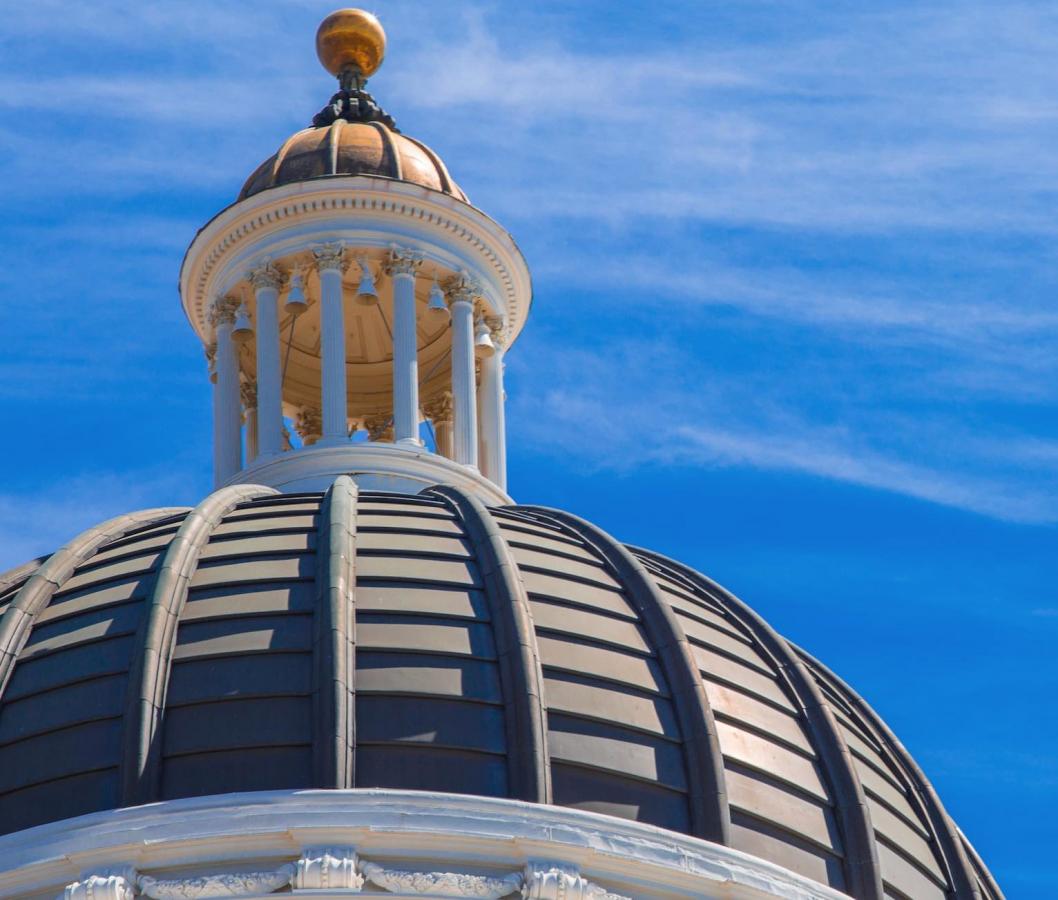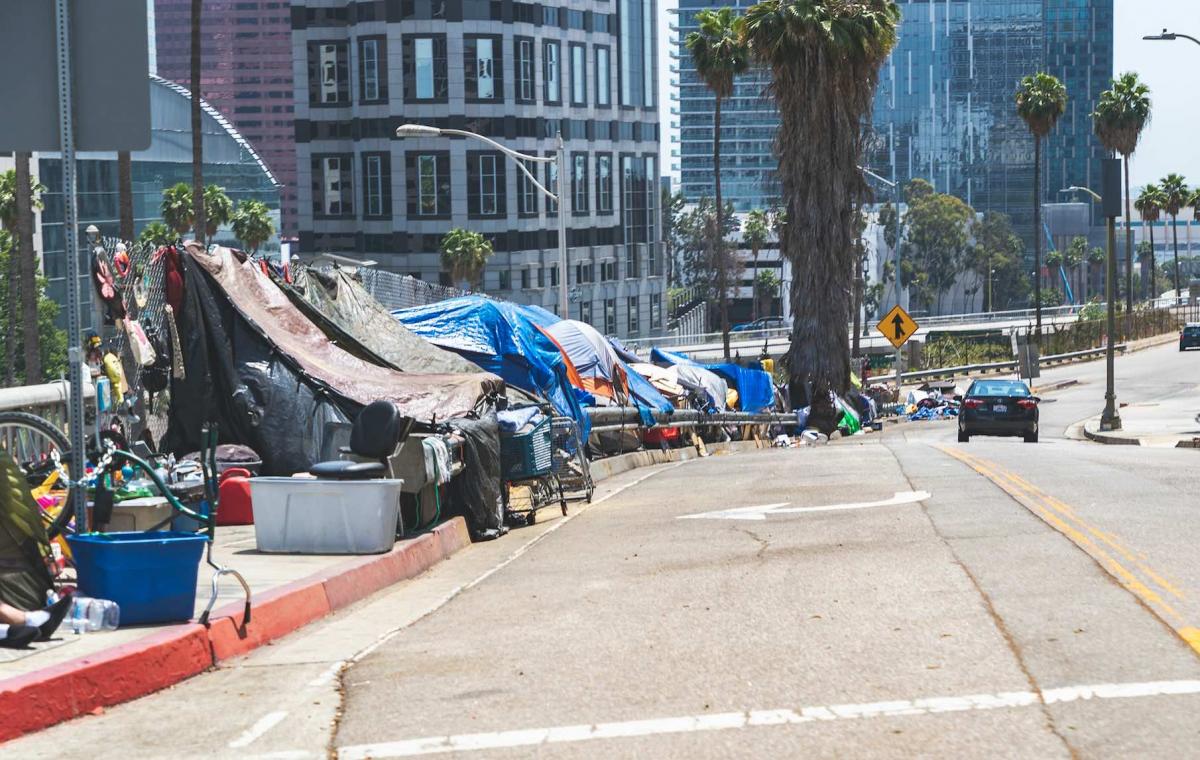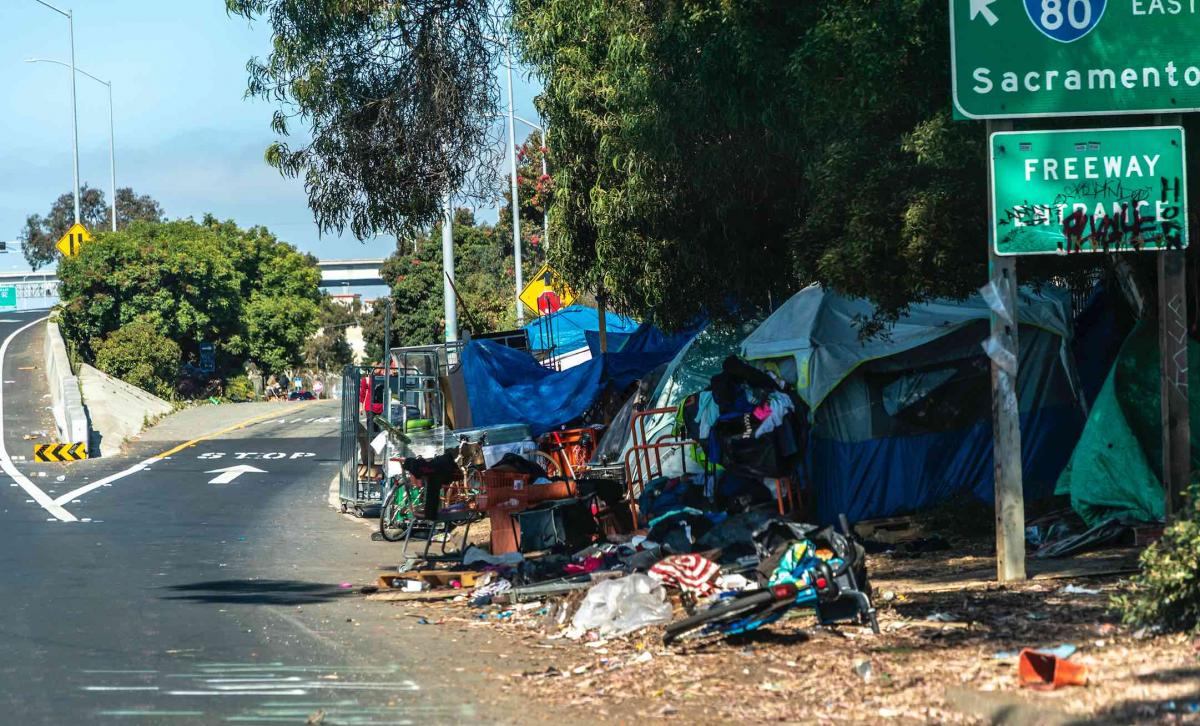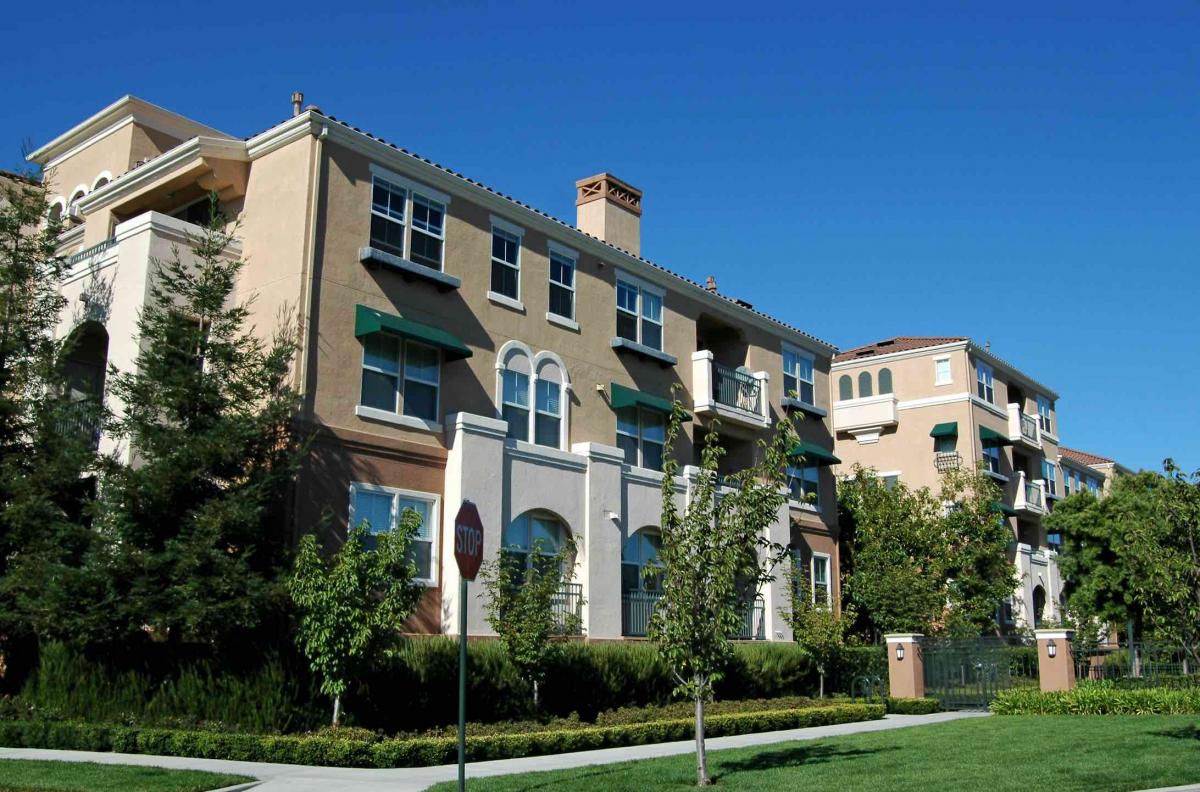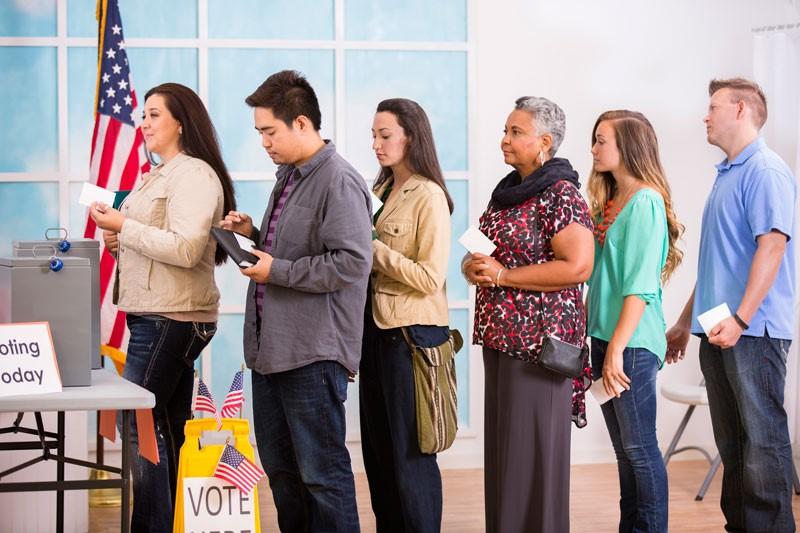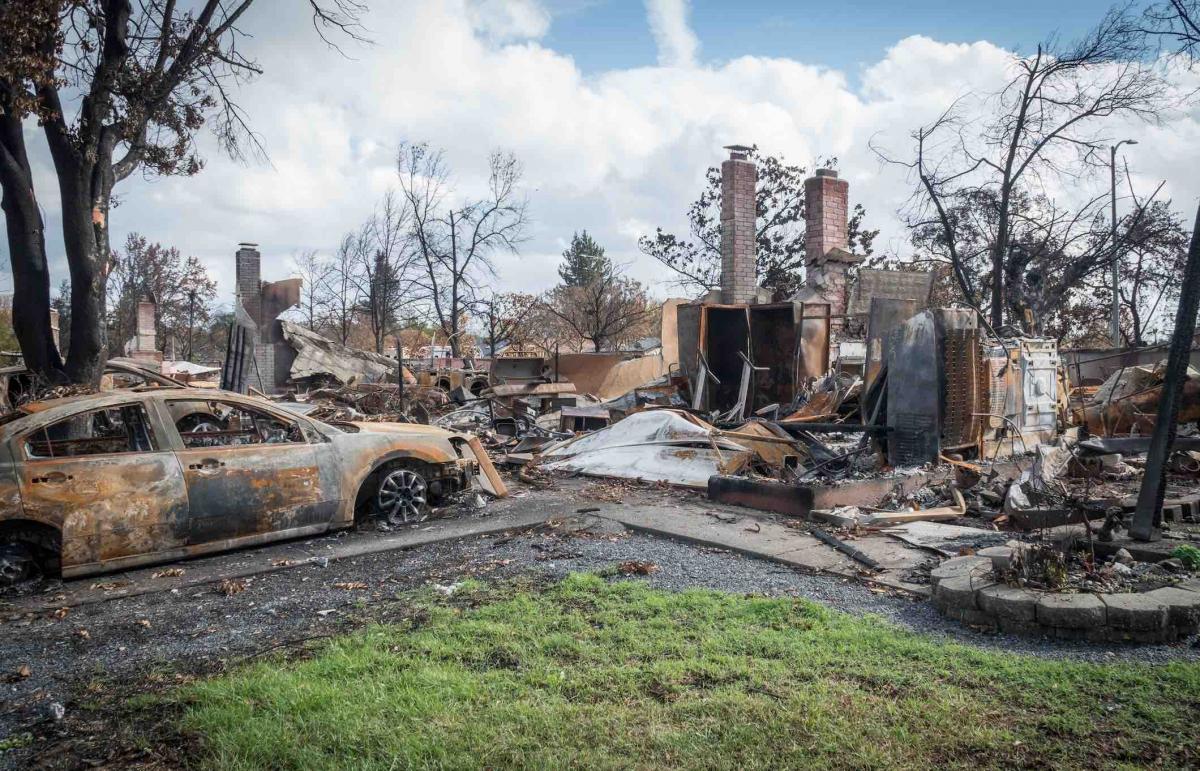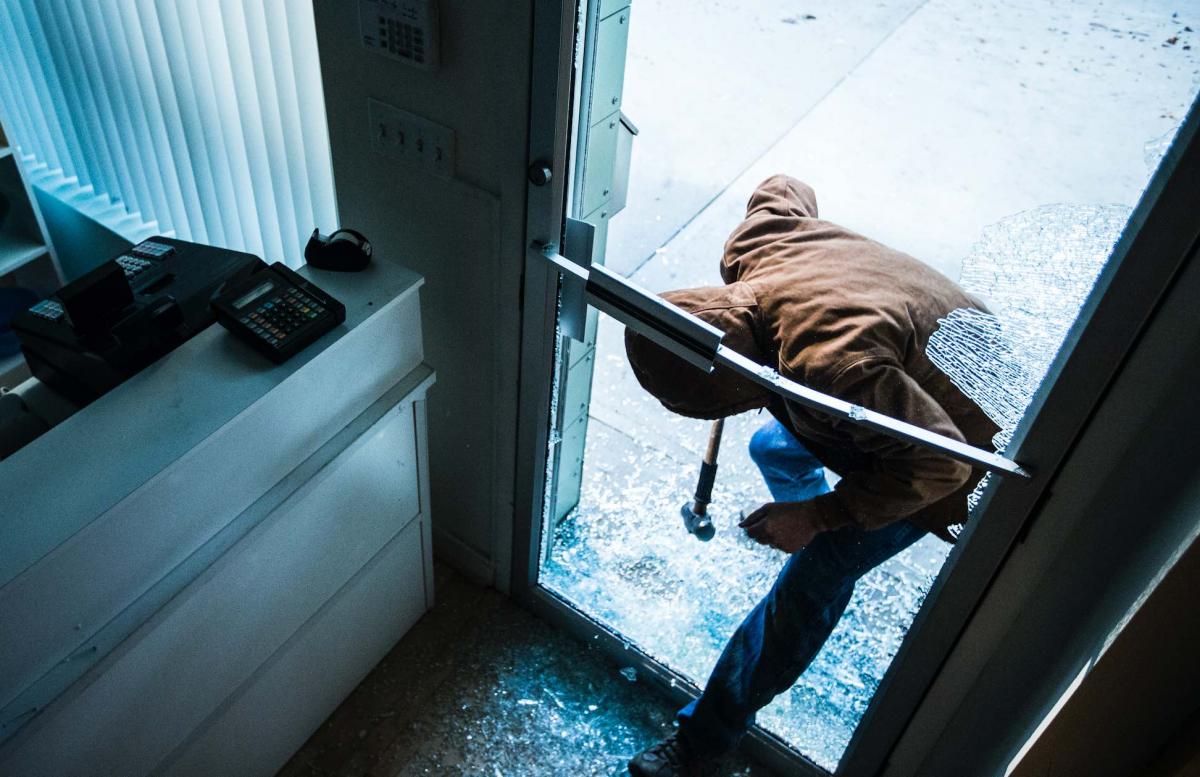2018 Legislative and Ballot Year in Review
Dan Carrigg is deputy executive director and legislative director for the League; he can be reached at dcarrigg@cacities.org.
Despite a booming economy, low unemployment and a prosperous state budget, the 2018 California legislative year was clouded by several factors. Harassment investigations led to the resignations of three legislators, and the mid-year recall of an Orange County senator eroded the Democratic supermajority. The clash between California’s progressive policies and President Trump continued on issues ranging from climate and energy to immigration, offshore oil drilling and net neutrality. Smoke filled the skies as wildfires raged and legislators debated how to mitigate dangers and allocate responsibility, liability and costs. Ballot measure sponsors leveraged legislators into enacting unwanted laws, and frustration grew over increasing poverty, skyrocketing housing costs and growing numbers of homeless people on our streets.
Further evidence of political uneasiness was reflected on the November ballot, with Proposition 9 proposing to split California into three states (a court removed this measure from the ballot), Prop. 5 proposing to grant up to $2 billion annually in property-tax breaks to motivate seniors to move, Prop. 10 proposing to restore authority for local rent control and Prop. 6 proposing to repeal the 2017 landmark transportation funding package.
For the League, activity on ballot measures dominated much of the year. Ballot-related activities included opposing the Business Roundtable’s destructive proposal to undermine local revenue authority, which was subsequently pulled from the ballot; working with a coalition of local governments, transit agencies, construction companies and labor groups to defeat Prop. 6; and supporting the successful passage of Props. 1 and 2 to provide additional affordable housing and homelessness resources. The League also supported the passage of three other measures on the June ballot to protect transportation funding and provide funding for parks and water infrastructure and incentives for rainwater capture systems.
In other areas, the League:
- Successfully advocated for $500 million in additional homelessness funding;
- Documented and advocated for solutions to the growing city pension crisis;
- Protected cities from being allocated liability for utility-caused wildfires; and
- Limited the damage in what has become an increasing effort by the Legislature to impose top-down solutions on housing issues.
The “Me Too” Movement, Recall and Other Legislative Changes
Following the revelations of pervasive sexual harassment in the movie industry, a group of female lobbyists, staffers and legislators signed a letter in fall 2017 challenging the Capitol’s culture of sexual harassment. That letter launched multiple allegations and investigations and led to the resignations of three legislators: Sen. Tony Mendoza (D-Artesia) and Assembly Members Matt Dababneh (D-Woodland Hills) and Raul Bocanegra (D-Pacoima). Other legislators were investigated and reprimanded. By early February, the Legislature passed AB 403 (Melendez), which provides whistleblower protection to Capitol staff who report misconduct. The Legislature also established a more independent process for reviewing sexual harassment allegations.
The resignations also affected the Capitol’s balance of power. In 2017, Democrats aggressively wielded their two-thirds supermajority power to enact major policies, but the resignations of three Democratic legislators in 2018 eroded the party’s supermajority status until special elections could refill the seats. Republican operatives saw an opportunity to further erode that margin. With the Senate Democratic supermajority already at the minimum 27 seats, Republicans launched a recall effort against Sen. Josh Newman (D-Fullerton) over his vote for the transportation funding package. Sen. Newman was considered vulnerable because he had beaten his Republican rival, former Assembly Member Ling Ling Chang, in 2016 by only 2,500 votes. Despite a massive effort by Senate Democrats to defend the seat, Sen. Newman lost the recall and was replaced by Sen. Ling Ling Chang (R-Diamond Bar).
Leadership changes occurred in the Senate with former Assembly Speaker Toni Atkins (D-San Diego) replacing termed-out Senator Kevin de León as president pro tempore, and Assembly Member Marie Waldron (R-Escondido) replacing Assembly Member Brian Dahle (R-Bieber) as Assembly Republican leader. Unlike the turnover that accompanied shorter term limits, existing legislative leadership could remain stable given their term limits: President pro Tem Atkins (2024), Senate Republican Leader Pat Bates (R-Laguna Niguel) (2022), Assembly Republican Leader Marie Waldron (2024) and Assembly Speaker Anthony Rendon (2024).
State Budget Builds Healthy Reserves, Dedicates Funding for Homelessness
The final budget largely corresponded with Gov. Jerry Brown’s “May Revise” with $137.7 billion in General Fund spending, out of a total budget of $199.7 billion. Building state reserves was the central feature. The Rainy Day Fund is projected to grow to $13.8 billion by the end of the 2018–19 fiscal year. Additional revenues were set aside in two new savings funds — a $200 million reserve for safety net programs and the Budget Deficit Savings Account that will hold a portion ($2.6 billion) of the Rainy Day Fund until after May 31, 2019.
The budget also addressed homelessness, one of the League’s 2018 strategic priorities, with $500 million in one-time Homeless Emergency Aid Block Grants. Achieving this result required significant work. The League’s executive officers initially raised the homelessness issue with Gov. Brown at a meeting in January. Subsequently the League worked on this issue with a coalition that included mayors representing the state’s largest cities. These efforts resulted in $250 million being included in the “May Revise”; the final budget doubled that amount. AB 1827, a League-supported trailer bill, placed Prop. 2 on the ballot to resolve legal ambiguities associated with dedicating mental health funding to build 10,000 housing units for homeless Californians.
Ballot Measures Dominate League’s Focus
The greatest threats to local control in 2018 emanated from two ballot proposals. One proposed permanently hamstringing local governments’ ability to fund basic services by imposing a two-thirds vote requirement on all local revenue measures; the other was a partisan-motivated effort to attempt to protect Republican congressional seats by wiping away vital transportation funding needed to maintain the state’s deteriorating streets, roads and bridges.
Combatting the Tax Fairness, Transparency and Accountability Act of 2018. Sponsored by the Business Roundtable and labeled “The Corporate Tax Trick” by the League and other opponents, the Tax Fairness, Transparency and Accountability Act was slated to appear on the November 2018 ballot. The measure would have limited local ability to fund services by requiring all local taxes to be subject to a two-thirds vote, repealing 25 measures approved in June by local voters and placing onerous conditions on the imposition of local fees. Major funding for the measure came from the soda, oil, insurance, pharmaceutical and other industries that spent over $7 million to gather signatures; the American Beverage Association (ABA) was the largest funder. (The ABA had already spent over $25 million in California trying unsuccessfully to defeat local soda tax initiatives intended to help prevent childhood obesity and improve the health of communities. Only four cities statewide, however, had imposed such a tax.)
The League helped form an opposition coalition of local government and union groups. Pressure generated by our opposition yielded results. Several days before the June 28 legislative deadline to remove a measure from the ballot, the ABA offered a legislative deal to pull the measure in exchange for the passage of a budget trailer bill, AB 1838, which pre-empts the ability of cities and other local agencies from levying any new tax, fee or assessment on groceries and soda for 12 years.
While the legislative deal was distasteful, it was the lesser evil. Nevertheless, the League submitted an “oppose” letter for the record, due to a provision that would withhold all sales taxes if a charter city or its voters validly exercised their existing constitutional right to address local municipal affairs, which includes deciding whether or not to levy a soda tax.
The wisdom of the soda industry’s gambit remains to be seen. Many Democratic legislators, concerned about the health impacts of soda, were angry about being leveraged in this way. This action puts the industry on the legislative radar, and a ballot measure sponsored by doctors and dentists to impose a statewide soda tax has been proposed for 2020.
Protecting Transportation Funding: Supporting Prop. 69 (June) and Opposing Prop. 6 (November). Shortly after SB 1 passed, political consultants advising congressional Republicans proposed repealing the gas tax as a strategy to drive Republican turnout in vulnerable congressional districts. Their efforts led to Prop. 6 being placed on the ballot to repeal SB 1 (Beall, Chapter 5, Statutes of 2017), the landmark 2017 transportation funding package.
The League was compelled to fully commit to defeating this ill-advised measure. We had worked too hard to improve transportation funding for cities to allow this effort to succeed. Transportation is a core issue for cities; in fact, improving roads was the original reason cities came together to form the League in 1898. SB 1 is a comprehensive $5 billion funding package focused primarily on maintaining existing transportation networks, including the state highway system, transit and local streets, roads and bridges. The funding package also placed Prop. 69 on the June 2018 ballot. Prop. 69, passed by 80 percent of the state’s voters, ensures that the Legislature cannot divert new transportation funding sources for other uses.
Funding for cities in SB 1 did not happen by accident. For 10 years, the League and California State Association of Counties (CSAC) advocated for a comprehensive transportation funding solution that addressed not only the $59 billion backlog in work for the state highway system but also the $70 billion funding shortfall for the local transportation network, which was documented in a series of biennial reports. This painstaking and costly effort demonstrated how the condition of our local transportation infrastructure was deteriorating due to inadequate funding. The contributing factors were obvious: Available revenues for maintenance were eroding, the gas tax (last increased in the 1990s) had never been indexed for inflation, more efficient vehicles meant less per-gallon revenue and electric vehicles were not contributing any revenue whatsoever.
The most recent 2018 California Statewide Local Streets and Roads Needs Assessment Report found that SB 1 will reduce the funding shortfall for cities and counties by $18 billion over the next 10 years while bringing over two-thirds of the local network into a state of good repair. In its first year alone, more than 6,500 local and state transportation safety and improvement projects are already underway, with thousands of additional projects forecasted beyond the first year.
Prop. 6 would have eliminated these projects and more than $52 billion in dedicated transportation funding authorized by SB 1 for the state highway system, transit and local streets and roads. Half of the SB 1 total is dedicated for local transportation networks, including $15 billion in direct subventions to cities and counties throughout the state, which doubles the amount these agencies were receiving prior to SB 1.
The League sincerely thanks California voters. In rejecting Prop. 6, voters demonstrated their support for maintaining infrastructure as a worthwhile public investment and validated the work of the Legislature to craft a balanced package on a tough issue, while avoiding an even greater infrastructure crisis. Cities can now move forward and use these funds to improve the conditions and safety of their roads and bridges. The League also thanks Gov. Brown and our many allies in business, labor, local government and transit who jointly committed so much time and extensive resources to battling Prop. 6 — and to making sure California voters fully understood that this proposal would have halted more than 6,000 transportation improvement projects, threatened driver and pedestrian safety, increased traffic congestion, cost jobs and hurt taxpayers. Bravo!
Building Affordable Housing and Homeless Housing: Supporting Props. 1 and 2 (November). Despite the Legislature’s significant policy focus on affordable housing in recent decades, state funding is hard to find when it comes to offering subsidies to build affordable units for low-income households and homeless individuals and families. And though housing elements and the local zoning, development and approval processes are debated in great detail, the reality is that many individuals — absent public subsidies — are too poor to afford private-sector rents. The reduction of federal affordable housing construction programs, which began in the 1980s, compounded these challenges. The Legislature also eliminated local redevelopment agencies that provided the single largest state source of affordable housing, averaging over $1 billion per year. The absence of funding for affordable housing has certainly contributed to the current affordable housing and homelessness crisis.
For these reasons, the League aggressively supported numerous proposals that will provide funding to build units — and served on the steering committee for the coalition to pass Prop. 1, a $4 billion affordable housing bond, and Prop. 2, a $2 billion funding proposal to help construct 10,000 housing units for homeless individuals with mental illness. These measures are sorely needed, but much more must be done.
Improving Park and Water Infrastructure: Prop. 68 (June) and Prop. 3 (November). As California’s population grows, state and local agencies face increasing challenges in keeping up with infrastructure demands. Local governments also face a higher vote threshold (two-thirds) than the state (which needs only a simple majority) when seeking voter approval of bonds that improve infrastructure; local school construction is the only exception (requiring 55 percent voter approval). Though the League has long supported a lower vote threshold for such investments, including sponsoring ACA 4 (Aguiar-Curry) in the 2017–18 legislative session, such measures have difficulty moving in the Legislature. As a result, it is much more challenging to fund such investments via local efforts.
- Prop. 68, Park and Water Bond: The League supported SB 4 (de León), a $4 billion park and water bond that was placed as Prop. 68 on the June ballot and passed by the voters with 57.4 percent of the vote. Under the measure, each city receives at least $200,000 for its parks and will also be eligible to apply for hundreds of millions of dollars in additional funding for local parks and water upgrades, including safe drinking water, recycling, flood protection and climate change adaptation projects.
- Prop. 3, Supply and Water Quality Bond: The League also supported Prop. 3, a proposed $8.877 billion general obligation bond to improve water infrastructure. Perhaps influenced by the earlier approval of Prop. 68 in June, voters rejected this proposal by a narrow margin.
Property-Tax Breaks and Rent Control: Props. 5 and 10 Both Defeated. Although the League analyzed and debated Props. 5 and 10 in its policy committees, after significant discussion the League board opted not to engage on these two ballot measures; voters defeated both by heavy margins. Prop. 5, sponsored by the California Association of Realtors, would have provided up to $2 billion in annual property-tax breaks as an incentive for seniors to move. Prop. 10, sponsored by housing advocacy groups, would have restored local authority to enact rent control after the Legislature pre-empted cities with the 1996 Costa-Hawkins Act.
Lessons Learned From the 2018 Ballot Leverage Game
History is a great teacher, and many stakeholder groups took notice of the successful efforts of two 2018 ballot proponents to leverage concessions from the Legislature. The tactic they used was simple: Draft a proposed ballot measure that has a good chance of passing unless tens of millions of dollars are spent in a campaign to defeat it, collect enough signatures to qualify it for the ballot, wait until the statutory deadline to pull measures from the November ballot arrives in late June and see who blinks. In 2018, three ballot proponents employed this strategy:
- The American Beverage Association (ABA) paid for most of the signature gathering for the Business Roundtable’s Tax Fairness, Transparency and Accountability Act and then the weekend before the deadline offered a legislative deal to pull the ballot measure in exchange for a 12-year ban on local soda taxes;
- Proponents of the California Consumer Privacy Act of 2018, a measure giving consumers aggressive tools to control the use of personal information by companies using or providing internet services, similarly leveraged the passage of AB 375 (Chau), a narrower version of the ballot measure; and
- Paint companies, facing litigation over lead paint, attempted to forge a legislative agreement to cap their liability after qualifying the Healthy Homes and Schools Act but were unsuccessful in leveraging an alternative — possibly because their ballot measure didn’t poll sufficiently well.
Expect more stakeholder groups to use this strategy to advance their priorities as positioning begins for the 2020 ballot.
Overly Weighted Focus on Local Housing and Land Use
A University of Southern California (USC)-Los Angeles Times poll conducted in October asked California voters about the contributing causes to the state’s housing crisis. Besides voters rejecting more state intervention in local land use, only 9 percent of voters agreed that local zoning rules are a major cause of the state’s housing affordability problems. The voters also seemed to recognize that many other factors affect housing prices and rents, yet in the halls of the state Capitol, it is often politically convenient to heap blame on local planning and resident input.
The appetite for top-down planning and control edicts is growing in the Legislature. Accompanying this trend is the perception that existing residents — who engage in local government decisionmaking in an open and transparent process under the Brown Act and other laws — should have their issues and concerns dismissed and overridden to expedite development projects. State agencies and local governments are just beginning to implement the 15-bill housing package adopted in 2017 — much of which focused on local land-use planning. Nevertheless, legislators introduced another 300 bills pertaining to nearly every aspect of housing and land-use law in California. Thus, for the League, 2018 was a year of constant defense against efforts to limit or remove local authority. Fortunately, many bills died or were amended to resolve important issues, but others got through.
SB 827 (Wiener) would have effectively rezoned all land within a half-mile radius of a “major transit stop” or a quarter-mile radius of a transit stop on a “high quality transit corridor” but was halted in the Senate. Various second-unit bills, including SB 831 (Wieckowski) that would have prohibited cities from imposing any fees on these units, stalled as well. Similar measures will likely be introduced in 2019.
Still other bills passed, including:
- SB 828 (Wiener) and AB 1771 (Bloom), which make comprehensive changes to the Regional Housing Needs Assessment (RHNA) process;
- AB 2162 (Chiu), which requires that supportive housing be a “use by right” in zones where multiple dwelling uses are permitted, including mixed-use zones; and
- AB 2923 (Chiu and Grayson), which provides Bay Area Rapid Transit (BART) land-use authority over its property.
Such bills reflect legislators’ frustration with housing costs and a desire to push for solutions, but the isolated focus on local government planning also reflects political reality. In the USC-Los Angeles Times poll, voters ranked the lack of rent control, inadequate funding for low-income housing, environmental regulation, foreign buyers, influence of the tech industry and other factors as bigger contributors to the state’s housing problems than local zoning rules, but legislators often prefer to sidestep such issues as politically difficult. Furthermore, other actions supported by environmental organizations and developers conflict with the state’s objectives of increasing housing supply and lowering costs.
Developers often cite litigation against housing filed under the California Environmental Quality Act as a key barrier, but seriously addressing the issue has been a nonstarter in the Capitol. A booming economy enables apartment owners to rapidly increase rents in desirable areas, but AB 1506 (Bloom), which was supported by housing advocates and tenant groups and would have restored local authority to enact rent control, stalled in its first committee, and the development industry spent over $61 million to defeat Prop. 10. Legislators and developers make demands for local governments to reduce fees, eliminate parking requirements and cut back on design criteria, but there is no accompanying requirement for developers benefiting from such cost reductions to actually reduce the price of homes sold or rented. Local fees are criticized for adding to housing costs, but no legislative resistance occurred in May when the Building Standards Commission required solar panels on all new homes built after 2020 — at an estimated additional cost of $9,500 per unit. Developers and housing advocates raise concerns about the need to expand housing supply and locals are blamed for the lack of housing production, but then the Legislature adopts conflicting bills like AB 2913 (Wood) that doubles the time from six to 12 months before a developer with local permits must commence work and AB 2973 (Gray) that authorizes developers with approved tentative maps, parcel maps or vesting tentative maps to request to further delay housing development for an additional two years.
The voters surveyed in the USC-Los Angeles Times poll are correct in asserting that many factors contribute to housing development prices and rents. And other areas should also be examined — such as increasing poverty levels, young adults saddled with student debt, the meager savings of aging baby boomers, increasing mortgage rates, inadequate supplies of skilled construction labor and developers slowing production of inventory to keep profits up. Blaming residents and local governments only goes so far and does not move the discussion forward. And although the passage of the housing bond is helpful, it barely begins to fill the massive void in affordable housing funding created by the elimination of redevelopment. It’s time for the Legislature to take a broader look and address other factors contributing to a slower housing market recovery.
Wildfire Response
The devastating wildfires of 2017 — including the Tubbs Fire in Santa Rosa that destroyed over 5,000 homes — triggered more than 70 bills responding to issues including forestry management, homeowner insurance policies, pre-positioning of fire suppression equipment and efforts to shift liability for utility-caused fires by reversing the long-established principle of inverse condemnation. To prepare for these issues, the League worked through its policy committees to update and clarify its policies and then engaged as a major player in the successful effort to improve fire safety and prevention and to protect fire victims and cities from absorbing increased liability for utility-caused fires.
A comprehensive legislative package was developed in a conference committee and amended into SB 901 (Dodd).The measure:
- Includes over $1 billion over five years for forest management and fire prevention;
- Streamlines procedures associated with forest thinning and fuel reduction;
- Increases energy production from biomass fuels;
- Expands the mutual aid system to allow for advance placement of firefighters and equipment and fuel reduction;
- Requires utilities to adopt wildfire mitigation plans and provides some additional flexibility for utilities to securitize wildfire-related debts and recover costs from ratepayers; and
- Establishes the Commission on Wildfire Cost Recovery.
In related efforts, the League worked in partnership with the California Fire Chiefs Association to secure $50 million for pre-positioning emergency equipment and supported SB 833 (McGuire), which improves emergency notifications.
Addressing Pensions, California Cities’ Sleeping Giant
In February, the League released a comprehensive study revealing the hard truths that many cities are grappling with as they are forced to shift ever-growing shares of their General Fund revenues to cover dramatic increases in pension costs. To better understand the cost drivers behind the increasing local employer contribution rates and the impacts on cities, the League commissioned a leading California actuarial firm serving only public sector agencies to analyze anticipated pension contribution rates for cities as a percentage of payroll and determine how those future contribution rates would impact cities’ General Funds. This study was limited only to pension liability and did not reflect costs associated with active or other post-employment benefits such as health care. The study found that rising pension costs will require cities to nearly double the percentage of the General Fund dollars they pay to the California Public Employees’ Retirement System (CalPERS) over the next seven years, with 10 percent of cities projected to spend 21 percent or more of General Fund revenues on pension costs. For many cities, these costs will soon reach unsustainable levels.
Pension cost increases affect city budgets much more than they do the state budget. Cities spend a large portion of their budgets for police, fire and other municipal services. Also, unlike the state budget, which has recovered significantly since the Great Recession thanks to voter-approved tax increases, many cities have not experienced a financial rebound. With local pension costs outstripping revenue growth, cities face difficult choices that will be compounded in the next recession. Under current law, cities have two choices: Attempt to increase revenue or reduce services. When local cuts occur, public safety — including response times — will likely be impacted.
As expected, the Legislature had little appetite in 2018 to lead an effort to identify sustainable pension solutions. Gov. Brown, who understood and was vocal about these challenges, filed a comprehensive legal brief on the pending Cal Fire Local 2881 v. the California Public Employees’ Retirement System case at the California Supreme Court. He urged the court to revise its previous interpretations of the “California Rule” to provide additional flexibility for public agencies to address unsustainable costs. In April, the League also filed a brief with the court, and oral arguments occurred on Dec. 5, 2018. The court is expected to rule within 90 days.
The League also continued increasing the presence of cities at CalPERS meetings and strengthening relations with its board members and executive staff. It is vital to expand their awareness of the impacts on cities of the board’s decisions, including divestment proposals that would weaken the fund’s returns. The League’s executive officers met with CalPERS leaders in April to further convey the challenges cities are facing. To ensure that city employees were better informed about the positions of the candidates for the board seat representing active employees, the League also conducted a candidate survey and distributed the results to cities. In October, public employees rejected the incumbent and chose a police officer from the City of Corona — a city experiencing significant pension challenges — as a new CalPERS board representative. In the Legislature, the League also engaged on many bills affecting employers and was instrumental in negotiating a tailored solution in AB 1912 (Rodriguez) to the challenge of pension liabilities of joint powers agencies.
Renewed Discussions on Tax Reform
Gov. Brown successfully avoided getting drawn into the abyss of tax reform in the Capitol during his eight-year tenure, likely influenced by his experience with Prop. 13 during his first terms as governor. The issues are controversial and complicated. Solutions require two-thirds legislative votes and possibly ballot measures, and any changes will leave some stakeholders unhappy. But such obstacles do not stop the discussions.
For the past several years, Sen. Bob Hertzberg (D-Van Nuys) has been introducing legislative proposals to reduce state revenue volatility by expanding the sales tax base to apply to various services in exchange for reducing the state income tax. While these bills triggered some discussions, they stalled due to the governor’s lack of engagement on the issue.
The federal tax reform package punished high-tax states like California because it caps federal deductions for state and local taxes at $10,000. It sparked the introduction of several proposals that explored allowing state taxpayers to convert their tax obligations into charitable deductions under federal law, but these stalled after the Internal Revenue Service issued a mid-year advisory warning that it would reject such tactics.
Sen. Steve Glazer (D-Orinda) introduced SCA 20, a proposed constitutional amendment to allocate local sales tax derived from online purchases to the destination where the customers receive the product. This measure highlighted the growing trend of consumer purchases made using e-commerce; however, the changing retail landscape with fewer brick-and-mortar stores is not a new issue for the League. Since 2015, the League has been having internal policy discussions on sales taxes and convened a working group of city managers in fall 2017 to attempt to find common ground on sales tax allocations from internet sales. After numerous meetings in 2018, the group made several recommendations to be considered by the League policy committees in January 2019, including the need for better data from the California Department of Tax and Fee Administration on how a potential shift to destination allocation would affect individual cities.
A major related development occurred in late June when the U.S. Supreme Court decision in South Dakota v. Wayfair reversed several prior cases and held that states and local governments may require retailers with no in-state physical presence to collect sales and use tax. The California Department of Tax and Fee Administration issued an implementation memo in late December 2018 as this issue of Western City went to press.
Several factors ensure that tax reform discussions will accelerate in the Capitol in 2019:
- The qualification of the “split-roll” ballot measure for the November 2020 ballot, proposing to change Prop. 13 to require periodic property-tax reassessments of commercial properties;
- The California Association of Realtors’ expected efforts to craft a revised version of the recently failed Prop. 5; and
- A new governor who touts the benefit of having “big hairy audacious goals.”
Public Safety and Criminal Justice Tensions Continue
Gov. Jerry Brown’s eight-year tenure was accompanied by a massive reversal of previous state policy approaches to public safety and criminal justice. As a result of these changes, thousands of former state prisoners and smaller-time criminals who once were in county jails are now on the streets.
California’s radical changes to criminal justice policies include:
- Realignment in 2011, which shifted state prisoners to county jails to reduce state prison overcrowding in response to court orders;
- Prop. 47 (2014), which reduced criminal penalties associated with various crimes;
- Prop. 57 (2016), which made more felons eligible for earlier parole; and
- Prop. 64 (2016), which legalized recreational cannabis.
Throughout his tenure, Gov. Brown also vetoed most bills that proposed additional penalties and sentence enhancements for various crimes. These actions reflected his policy concern that criminal justice laws and penalties had grown overly punitive and dismissive of opportunities for individual rehabilitation. But there were obvious financial motivations as well — reducing the state prisoner population saved costs for a state budget recovering from massive deficits. In 2018, the deconstruction of the state’s criminal justice system continued with the passage of SB 10 (Hertzberg), which eliminated the state’s pre-trial bail system in exchange for a “risk assessment” process. The bail industry, however, gathered signatures for a referendum to place this issue before state voters in 2020.
At the local level, city officials, police chiefs and business
owners have ex-pressed intensifying concern about increasing
crime and a growing attitude among perpetrators that criminal
behavior has few consequences. A resolution sponsored at the
League’s 2017 Annual Conference by the City of Whittier, where a
habitual felon killed a police officer, called “upon the governor
and Legislature to enter into discussion with League and other
public safety stakeholders to identify and implement strategies
that will relieve the unintended negative impacts of existing
criminal law.” Efforts by the League and California Police Chiefs
Association to seek legislative action or a negotiated resolution
with Gov. Brown went nowhere.
The California Police Chiefs Association and California Grocers Association turned their attention to gathering signatures for a ballot measure. The ballot measure, the Reducing Crime and Keeping California Safe Act of 2018, has qualified for the November 2020 ballot and is supported by the League. This measure would:
- Broaden the definition of violent felonies;
- Address serial theft by facilitating prosecution for repeat offenses;
- Address organized retail theft;
- Alter the rules for granting parole to nonviolent offenders;
- Authorize DNA collection upon arrest for specified misdemeanors; and
- Enact changes to the management of the post-release community supervision population of offenders.
Absent a compromise with incoming Gov. Gavin Newsom, whose past criminal justice philosophy mirrors that of Gov. Brown, voters will decide the issue. But it could be a costly and difficult campaign. Former Gov. Brown, who adamantly opposes the measure he views as rolling back some of his previous reforms, retains a multimillion-dollar war chest that could be used to combat the measure.
In other areas, legislative concern continued over police use of force, exacerbated by the police shooting of a suspect in Sacramento, and subsequent civic demonstrations that filled the streets around the Capitol. The League convened a dialogue in its Public Safety Committee and published a comprehensive interview in the October 2018 issue of Western City with Sacramento Police Chief Daniel Hahn on strategies to build stronger relationships between the community and local law enforcement.
In the Legislature, contentious debate occurred over AB 931 (Weber), which proposed to change the legal standards associated with police use of deadly force; the bill was halted in the Senate during the final days of the session, but the issue is expected to return. In related actions, Gov. Brown vetoed AB 3131 (Gloria), a League-opposed bill that would have overly restricted local law enforcement’s access to surplus military equipment, but signed SB 1421 (Skinner), which exposes peace officers to the risk of having their identity revealed for nonsustained or exonerated incidents.
Cannabis Implementation: Industry and BCC Make End Run on Deliveries
The fledgling regulatory framework to implement the Adult Use of Marijuana Act authorized by Prop. 64 took effect Jan. 1, 2018. But rather than allowing the law to settle, legislative and administrative efforts to change the law continued, often at the behest of those looking to expand access to and profit from cannabis. Over 30 bills were introduced, and 18 passed.
Though many cities enacted ordinances to permit cannabis activity in their jurisdictions, within months cannabis advocates were arguing that more must be done to accelerate market expansion and access. SB 1302 (Lara) was proposed as an end run around local authority by allowing statewide cannabis delivery — in conflict with local ordinances. The League and other groups opposed the bill. That opposition, plus a two-thirds vote requirement, caused the measure to stall on the Senate floor. Shortly afterward, however, a similar delivery proposal appeared as part of a 100-plus-page set of proposed regulatory changes advocated by the Bureau of Cannabis Control (BCC). The League, other groups and nearly 100 cities opposed it as conflicting with both the letter of Prop. 64 and representations made to the voters. Despite the obvious conflicts, the BCC’s proposal continued to move forward and is under review by the Office of Administrative Law. Should this regulation take final effect, legal challenges are expected. This experience also raises questions about the growing influence of the cannabis industry in the Legislature and on the BCC.
Energy, Climate and Recycling
Over the past decade, California has established itself as a global policy leader in renewable energy, greenhouse gas reduction and other programs responding to global warming. The state established many ambitious goals, which include reducing greenhouse gas emissions 40 percent below 1990 levels by 2030, increasing renewable electricity production by 50 percent, reducing petroleum use in vehicles by 50 percent, doubling energy efficiency in existing buildings, limiting daily indoor water use to 55 gallons per person, reducing short-lived climate pollutants and more. The pragmatic obstacles and massive costs associated with such rapid change are daunting. Nevertheless, each year, administrative agencies and legislators strive to increase these goals. In 2018, SB 100 (de León) ratcheted up the state’s renewable energy objective to 100 percent renewables by 2045, and the Building Standards Commission required solar energy panels on every new housing unit built after 2020. AB 1745 (Ting), which proposed banning the Department of Motor Vehicles from accepting new registrations for any non-zero emission vehicle after 2040, stalled. While such efforts are laudable, at some point a reality check will occur about how willing California residents are to alter their lifestyles and how employers and millions of households will afford all the additional costs of increasingly ambitious state goals to reduce greenhouse gas emissions.
In other energy and environmental areas, SB 901 (Dodd) established biomass purchasing thresholds for utilities and SB 237 (Hertzberg) increased the ability of commercial and industrial energy users to purchase energy directly from suppliers rather than through the applicable utility or community choice aggregation. And SB 212 (Jackson) established a new program to require pharmaceutical and medical sharps manufacturers and distributors to create recycling programs for their products to divert these harmful items from municipal waste streams.
Issues for 2019
Any discussion of issues for 2019 starts with the tone that will be set and policies established by incoming Gov. Gavin Newsom. Based on his record as the former mayor of San Francisco, his experience in business, the books and reports he has published, the contents of his campaign website and his statements made when interviewed by the press and various stakeholder organizations, it is fair to expect he will set a very ambitious and aggressive agenda on some of the major policy challenges facing California, including addressing the widening economic gap between the haves and have-nots, crafting a better health care solution and improving both educational achievement and housing affordability.
Gov. Brown deserves major credit for cleaning up the state’s disastrous finances, including eliminating a $26 billion deficit, repaying many state debts and obligations, convincing state voters to approve a tax increase, enacting pension reform for new hires and stubbornly resisting many legislative spending requests while accumulating a $14 billion Rainy Day Fund. But at some point, the economy will stall, perhaps accelerated by increasing interest rates and global tariff battles. When it does, the Legislative Analyst’s Office predicts that without cuts, the state’s Rainy Day Fund would be quickly absorbed, followed by several years of budget deficits that could exceed $15 billion annually. Despite the present political tensions, the importance of federal funding for state health and welfare, disaster response and other programs cannot be ignored; it will be important for Gov. Newsom and legislators to maintain a working relationship with Congress and the Trump administration.
Robust tax reform discussions are guaranteed with the qualification of the split-roll property-tax proposal for the 2020 ballot, the expectation of another ballot proposal by the realtors to reduce property-tax impacts on seniors who move, implementation of sales tax collections under the Wayfair decision and renewed debate over how to allocate local sales tax from internet sales. Criminal justice policies will also be at the forefront, with an expected referendum on bail reform and the California Police Chiefs Association and California Grocers Association’s criminal justice ballot proposal qualified for 2020.
Public pensions will continue to create challenges for local agencies as costs increase. A decision by the California Supreme Court may open avenues for additional flexibility. Any judicial ruling modifying the California Rule, however, would likely require state legislation to provide direction and or authority to state and local governments. If not, expect increasing limitations on local services.
Housing supply and affordability will continue to be a focus. The many changes to local land-use laws enacted over the past two years should be given time to take effect before more are piled on. Simplistic concepts such as mandating local governments to “build” housing need to take into account economic reality, when the means of production rely on private market decisions and the availability of public subsidies. Recent polling also suggests state voters would reject aggressive efforts to insert the state into local development decisions. In a time of such political division, collaborative approaches should be explored rather than exacerbating the anti-city, anti-resident tone of recent years.
California cities are centers of innovation, commerce and quality-of-life services for 83 percent of the state’s population. The variety and unique aspects of our communities reflect the history, priorities and aspirations of our residents. The state’s economic success and progress on its climate goals require collaboration with cities. Restoring workable tax-increment financing and establishing much more aggressive state funding commitments for affordable housing would be a huge step forward.
As 2019 commences, there is much to celebrate about California and the continued promise of its future. The Golden State serves as a beacon not only for the nation but for the world. California cities and the League remain committed to our belief in the principles of local democracy, civic engagement and the innovative approaches we take to delivering services and building communities that reflect our residents’ needs and desires. The League stands ready to work collaboratively with our new governor and legislators to continue advancing and improving the quality of life for our residents whom we collectively serve.

